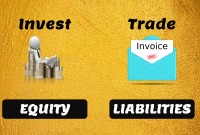- Home
- Business Processes
- Industry Knowledge
- Aerospace Industry
- Automotive Industry
- Banking Domain
- BFSI Industry
- Consumer/ FMCG Industry
- Chemicals Industry
- Engineering & Construction
- Energy Industry
- Education Domain
- Finance Domain
- Hospitality Domain
- Healthcare Industry
- Insurance Domain
- Retail Industry
- Travel and Tourism Domain
- Telecom Industry
- Leadership Skills
- eLearning
- Home
- Business Processes
- General Ledger (Record to Report)
- Legal Structures for Multinational Companies
Legal Structures for Multinational Companies
A multinational company generally has offices and/or factories in different countries and a centralized head office where they coordinate global management. A multinational company (MNC)is a corporate organization that owns or controls the production of goods or services in at least one country other than its home country.
Due to advent of information age and globalization, the traditional hierarchy of the industrial age is rapidly disappearing and new large groups that are spread across the globe are fast emerging. A multinational corporation is a company with headquarters in one country but they operate in many countries. The post Second World War period saw the rapid growth of multinationals in Europe, America and Japan. As the world economy is opening up with a fall in regulatory barriers to foreign investment, better transport and communications, freer capital movements, etc., international companies are finding it easier to invest where they choose to cheaply, and with less risk. With the advent of globalization, companies started expanding to international markets and establishing marketing, manufacturing, or research and development facilities in several foreign countries.
What are multi-national companies?
A multinational company generally has offices and/or factories in different countries and a centralized head office where they coordinate global management. A multinational company (MNC)is a corporate organization that owns or controls the production of goods or services in at least one country other than its home country. One of the first multinational business organizations, the East India Company, was established in 1601. After the East India Company, came the Dutch East India Company in 1603, which would become the largest company in the world for nearly 200 years.
Some current examples are big multi national companies like Apple, Google, Amazon, Coca-Cola, Starbucks, IBM, FedEx, Accenture, Samsung or General Electric etc. Nestle and Shell Oil are two examples of European multinational. Most of the largest and most influential companies of the modern age are publicly traded multinational corporations, including Forbes Global 2000 companies.
What are Conglomerates?
A conglomerate is a combination of two or more corporations engaged in entirely different businesses that fall under one corporate group, usually involving a parent company and many subsidiaries. Often, a conglomerate is a multi-industry company. Conglomerates are often large and multinational.
Features of MNCs & Conglomerates
Some of the attributes associated with these large multi-national corporations are:
- These multinational groups operate across the boundaries of nations
- They employ and serve thousands of people with different cultures.
- Their annual sales turnover is in billions of dollars.
- They raise money in different stock markets.
- In spite of all these diversities they may be part of the same global group.
- These companies operate as individual entities in different countries/markets and consolidate with the group.
- Domestic corporations are taxed on their worldwide income at the federal (country) and state levels.
- Compliance (without overpaying) makes the products & services of these conglomerates more competitive, earnings more attractive to investors & company a more responsible corporate citizen.
Evolution of Legal Structures for MNCs/Conglomerates
They are dynamic organizations that are constantly changing and evolving, acquiring and merging many companies, opening their offices in all parts of world and operating under the ambit of ever-changing complex organizational structures.
Fundamentally a corporation must be legally domiciled in a particular country and engage in other countries through foreign direct investment and the creation of foreign branches or foreign subsidiaries.
All these large groups have smaller companies within them. The conglomerate may be constituted of different units which may represent separate legal entities constituted in different countries having multiple layers of ownership (which might be added to the group through mergers, acquisitions or could be joint ventures). Multinational corporations can select from a variety of jurisdictions for various subsidiaries, but the ultimate parent company can select a single legal domicile.
Global operations of these corporations are conducted with multiple subsidiaries, branch offices and joint venture partners working together, constantly evolving and changing their legal structures through mergers, acquisitions and takeovers. These subsidiaries and partners are responsible for their own P&L. They have their own Fixed Assets (such as assets held for the purpose of producing or providing goods/services) and their own markets where their own or their other group concern’s products are sold and eventually consolidate with the group.
Multinational corporations may be subject to the laws and regulations of both their domicile and the additional jurisdictions where they are engaged in business. In some cases, the jurisdiction can help to avoid burdensome laws. Corporations can legally engage in tax avoidance through their choice of jurisdiction, but must be careful to avoid illegal tax evasion. These MNCs should comply fully with all statutory and tax laws & regulations around the world and ensure payment of the correct amount of taxes in every country where it operates.
Aside from setting up a private limited company as subsidiary, foreign companies have two other options for entering the foreign market – a Branch Office or a Representative Office. Both are registered locally in the country of operations, follow local procedures, and need to pay official fees for registration.
Related Links
You May Also Like
-
Concept of Representative Office
A representative office is the easiest option for a company planning to start its operations in a foreign country. The company need not incorporate a separate legal entity nor trigger corporate income tax, as long as the activities are limited in nature.
-
After reading this article the learner should be able to understand the meaning of intercompany and different types of intercompany transactions that can occur. Understand why intercompany transactions are addressed when preparing consolidated financial statements, differentiate between upstream and downstream intercompany transactions, and understand the concept of intercompany reconciliations.
-
Global Business Services (GBS) Model
Global business services (GBS) is an integrated, scalable, and mature version of the shared services model. Global Business Services Model is a result of shared services maturing and evolving on a global scale. It is represented by the growth and maturity of the Shared services to better service the global corporations they support.
-
GL - Understanding Chart of Accounts
A chart of accounts (COA) is a list of the accounts used by a business entity to record and categorize financial transactions. COA has transitioned from the legacy accounts, capturing just the natural account, to modern-day multidimensional COA structures capturing all accounting dimensions pertaining to underlying data enabling a granular level of reporting. Learn more about the role of COA in modern accounting systems.
-
Horizontal or Flat Organizational Structures
Flat organizational structure is an organizational model with relatively few or no levels of middle management between the executives and the frontline employees. Its goal is to have as little hierarchy as possible between management and staff level employees. In a flat organizational structure, employees have increased involvement in the decision-making process.
-
Record to report (R2R) is a finance and accounting management process that involves collecting, processing, analyzing, validating, organizing, and finally reporting accurate financial data. R2R process provides strategic, financial, and operational feedback on the performance of the organization to inform management and external stakeholders. R2R process also covers the steps involved in preparing and reporting on the overall accounts.
-
GL - Review & Approve Journals
Review and Approval mechanisms ensure that the accounting transaction is reasonable, necessary, and comply with applicable policies. Understand why we need review and approval processes, what are they, and how they are performed in automated general ledger systems. Learn the benefits of having journal approval mechanisms in place.
-
Period End Accruals, Receipt Accruals, Paid Time-Off Accruals, AP Accruals, Revenue Based Cost Accruals, Perpetual Accruals, Inventory Accruals, Accruals Write Off, PO Receipt Accrual, Cost Accrual, etc. are some of the most complex and generally misconstrued terms in the context of general ledger accounting. In this article, we will explore what is the concept of accrual and how it impacts general ledger accounting.
-
When the quantum of business is expected to be moderate and the entrepreneur desires that the risk involved in the operation be shared, he or she may prefer a partnership. A partnership comes into existence when two or more persons agree to share the profits of a business, which they run together.
-
Funds contributed by owners in any business are different from all other types of funds. Equity is the residual value of the business enterprise that belongs to the owners or shareholders. The funds contributed by outsiders other than owners that are payable to them in the future. Liabilities are generally classified as Short Term (Current) and Long Term Liabilities. Current liabilities are debts payable within one year.
Explore Our Free Training Articles or
Sign Up to Start With Our eLearning Courses

About Us
Learning
© 2023 TechnoFunc, All Rights Reserved










